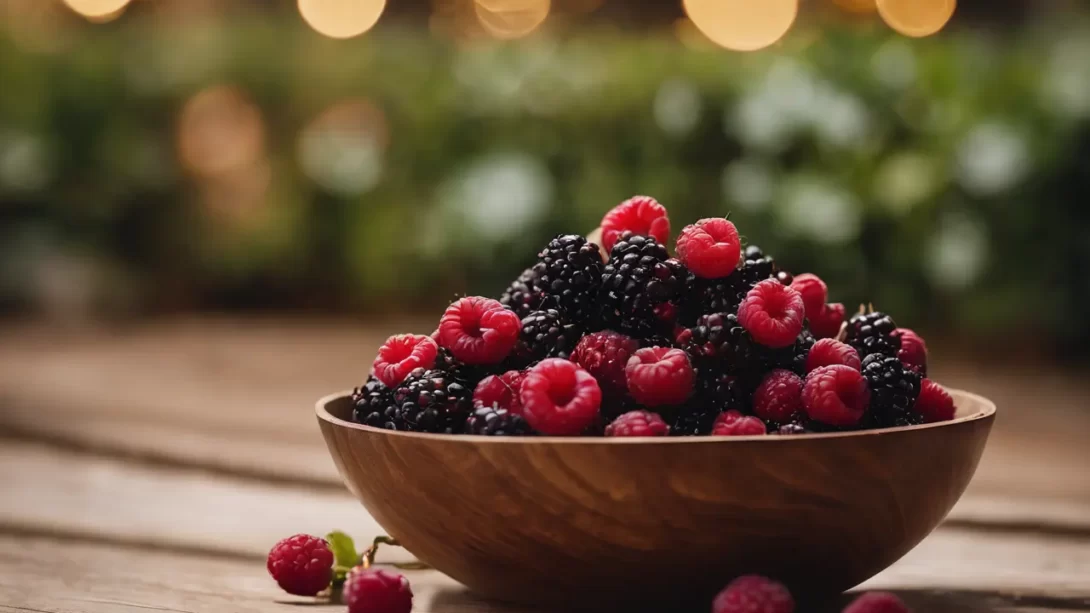Mulberries, a delightful and often underrated fruit, hold a special place in both history and the world of berries. Belonging to the Morus genus, these berries are not only rich in flavor but also in cultural significance, having been cherished for centuries across various civilizations. The taste of a mulberry is not just a simple sensory experience; it’s a blend of sweet, tart, and earthy notes that create a unique flavor profile. This article dives into the delectable world of mulberries, exploring their taste, varieties, and culinary uses.
Varieties of Mulberries
Mulberries come in several varieties, each with its own unique taste and appearance. The most common types are the Morus alba (white mulberry), Morus nigra (black mulberry), and Morus rubra (red mulberry). White mulberries are known for their sweeter, milder flavor, often with a hint of honey. Black mulberries are celebrated for their intense, wine-like taste, which is richer and more robust than their counterparts. Red mulberries, though less common, offer a beautiful balance of sweet and tart, reminiscent of raspberries. Understanding these varieties is key to appreciating the full range of flavors that mulberries can offer.
Flavor Profile of Mulberries
Describing the taste of mulberries requires an appreciation of their complex flavor spectrum. Generally, mulberries present a sweet taste with a subtle tart undertone, creating a balanced and refreshing flavor. The sweetness is often likened to a mix of honey and vanilla, especially in the white variety, while the tartness brings a slight zing, similar to that of a lemon or a mild blackberry. This combination makes them incredibly versatile in culinary applications. Additionally, some varieties, especially the black mulberries, may have a slight earthiness, giving them a more sophisticated profile that can appeal to a wide range of palates.
Texture and Mouthfeel
The experience of eating mulberries is enhanced by their unique texture and mouthfeel. These berries are generally soft and juicy, with a gentle, almost silky feel. The skin of the berry is thin, offering a slight resistance before yielding to a succulent interior. Unlike some other berries, mulberries do not have a crunchy texture from seeds; rather, their seeds are small and unobtrusive, contributing to a smooth overall eating experience. This tender, melt-in-your-mouth quality makes mulberries a delightful addition to both fresh and cooked dishes.
Culinary Uses of Mulberries
Mulberries are not just a treat to eat fresh but also a versatile ingredient in the kitchen. Their sweet-tart flavor profile lends itself well to a variety of culinary applications. They can be used in jams, jellies, and preserves, where their natural sweetness and vibrant color shine. Baked goods such as pies, tarts, and muffins are also excellent ways to incorporate mulberries, as their flavor complements both sweet and savory recipes. For a fresh twist, try adding them to salads or yogurt for a burst of natural sweetness. Mulberries also pair wonderfully with cheeses, nuts, and wines, making them a sophisticated addition to cheese boards and appetizers.
Nutritional Profile and Health Benefits
In addition to their delightful taste, mulberries are a powerhouse of nutrition. They are rich in vitamins C and K, iron, calcium, and dietary fiber, making them an excellent choice for a health-conscious diet. The antioxidants found in mulberries, such as resveratrol and anthocyanins, contribute to their health benefits, which include anti-inflammatory and anti-aging properties. These nutrients not only promote overall health but also enhance the berry’s natural flavors, making them a doubly beneficial ingredient. Their low calorie count and natural sweetness make them a guilt-free addition to any meal or snack, appealing to those looking to maintain a healthy lifestyle without sacrificing taste.
Growing and Harvesting Mulberries
For those interested in adding a personal touch to their culinary adventures, growing mulberries can be a rewarding endeavor. These trees are relatively easy to cultivate and are hardy in various climates. The key to achieving the best flavor from home-grown mulberries lies in proper care and timely harvesting. Mulberries thrive in well-drained soil and full sun, requiring regular watering during dry periods. Pruning is essential for maintaining health and productivity. The berries should be harvested when they are fully ripe, as this is when their flavor is at its peak. Ripe mulberries are plump and have a deep color, indicative of their variety. Gently handpicking them ensures the delicate fruits are not damaged.
Conclusion
Mulberries, with their unique taste and versatility, are a delightful addition to any gardener or food enthusiast’s repertoire. From the sweet, honeyed notes of the white mulberry to the rich, wine-like flavor of the black mulberry, these berries offer a range of tastes that can enhance a variety of dishes. Their nutritional benefits add to their appeal, making them a wholesome choice for incorporating into daily diets. Whether you’re enjoying them fresh, cooking with them, or growing them in your own garden, mulberries are a wonderful berry to explore in all its delicious forms. Their unique combination of flavors and textures makes them a must-try for anyone looking to expand their culinary horizons.



